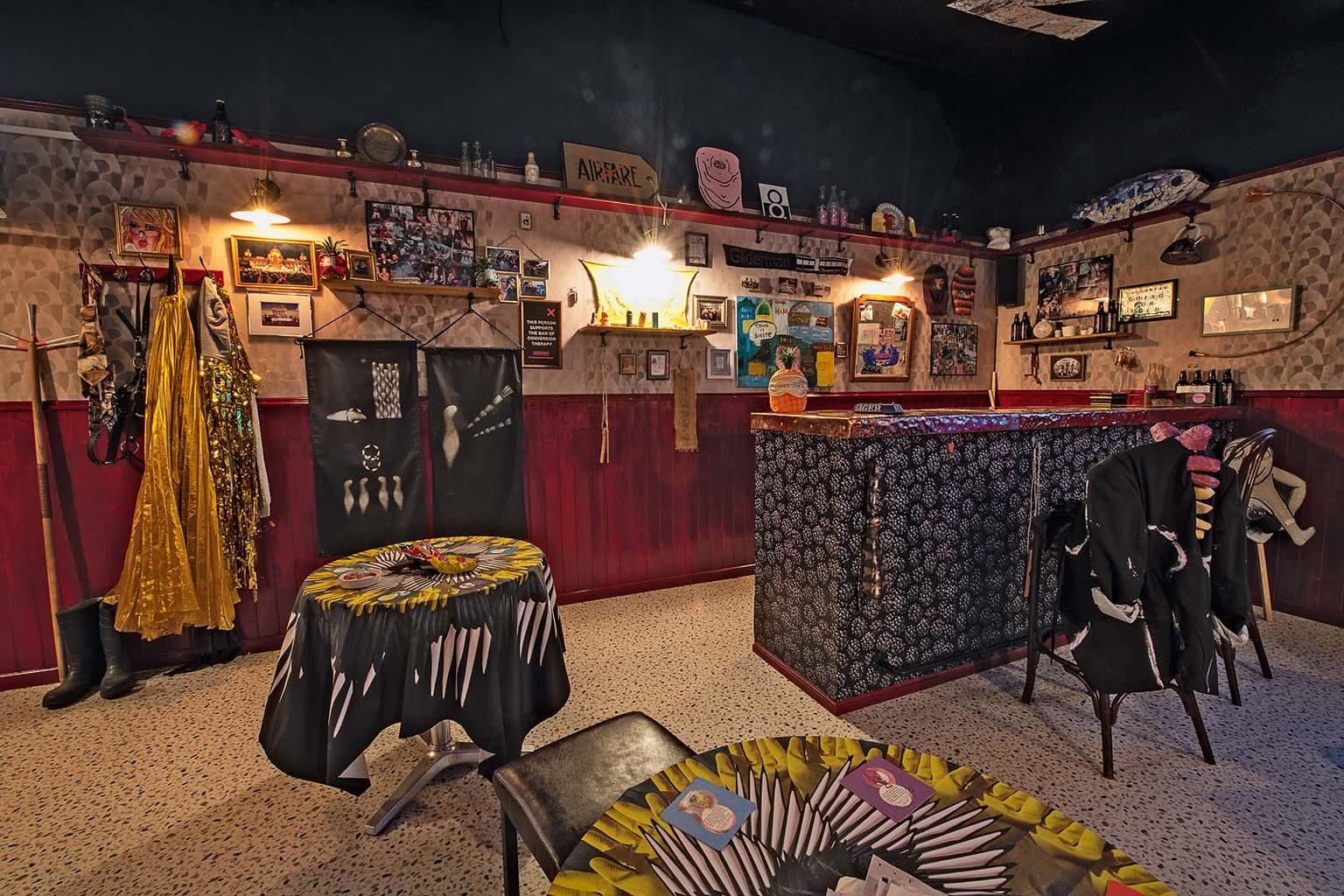Array Collective‘s Laura O‘Connor on bringing ‘The Druithaib‘s Ball‘ to Belfast

The artist and Anna Liesching, curator of art at National Museums NI, explain what acquiring the 2021 Turner Prize-winning installation with Art Fund support means to their local community.
In December 2021, the Belfast-based Array Collective made history when its members became the first artists from Northern Ireland to win the Turner Prize. The exhibition by that year’s nominees took place at the Herbert Art Gallery in Coventry, with Array winning with The Druithaib’s Ball, an immersive installation in the form of a prehistoric roundhouse sheltering an unlicensed Irish bar, known as a síbín. Around 300 objects of cultural and political significance feature in the work, including protest banners, photographs, sculpture and films.
The people of Northern Ireland will have their first chance to experience the installation on home turf in February 2023, when it goes on display at Ulster Museum in Belfast, which has acquired the work with Art Fund support.
Anna Liesching, who is curator of art at National Museums NI, led the campaign to acquire The Druithaib’s Ball after seeing the installation in Coventry. ‘It’s central to our policy to acquire works by artists looking at societal issues, so I knew Array had to come into the collection in some capacity,’ she says.
‘I thought we might acquire an element of the installation, but as soon as they won I knew we had to have the whole thing. There was such a sense of pride and excitement here, so to have the work in the collection and to be able to build an archive alongside it is very important.’
Array, named after the Belfast studio space shared by six of its members, is a collective of 11 artists who had worked together as activists before setting up formally in 2019. After the announcement of the Turner Prize nomination they began to think about how to represent themselves in Coventry.
‘We work as a community, and we wanted to include as many people from our ecosystem as possible,’ says Array member Laura O’Connor. ‘So we had a real debate about how we were going to transfer that lively, energetic sense of our work to England.’
The outcome of this brainstorming was a druids’ ball held at the Black Box arts venue in Belfast, filmed as the centrepiece for the Turner Prize installation. Billed as a wake to mark the centenary of the partition of Ireland in 1921, the event featured a series of performances, some dark and serious, others comic and absurd.
‘Everyone’s politics are different,’ says O’Connor (the collective includes English and Italian artists as well as Irish). ‘So there’s celebration and there’s mourning.’ Participants appear in costumes, most of them of the pre-Christian or folk themes favoured by Array as a way of challenging the perception of a binary Catholic/Protestant divide.
The edited film of the ball plays on three screens inside the installation, with the rest of the space given over to furniture and decorations, all of which have been made or chosen to provoke discussion of Northern Ireland’s complex identity.
Banners made by Array for protest marches on issues including LGBTQ+ rights, decriminalisation of abortion and debates over the Northern Ireland Protocol form a ceiling canopy. While most of the banners are serious in tone, some take a more humorous line, such as ‘Prepared for Peas, Ready for Sausage War’ and ‘Stop Ruining Everything’.
That the installation was made for display in England is key to its content, with the emphasis on giving outsiders a sense of Northern Irish activism and cultural life. ‘It’s far behind in lots of ways,’ says O’Connor. ‘But it’s nothing to do with the people who live here and everything to do with the people in charge. This is such an amazing community and everybody is so supportive.’
There is now anticipation about how local audiences will respond to The Druithaib’s Ball at Ulster Museum, where it joins a growing collection of contemporary art, including Patrick Goddard’s floor-based installation Blue Sky Thinking (2019), another recent acquisition supported by Art Fund. ‘Everyone in Belfast owns a piece of this work,’ says Liesching. ‘But because it’s their own story being presented to them it’s going to prove interesting how people receive that.’
The artists are also excited about the upcoming display, which will run for at least six months. ‘It might have been broken up, but now it’s a museum object, so we’re delighted people will get to experience it,’ says O’Connor. ‘The conversations might be different, but hopefully everyone’s going to get the jokes they didn’t get across the water.’
Each issue of Art Quarterly contains previews, reviews, long reads and artist interviews relating to current and upcoming exhibitions at museums, galleries and historic houses across the UK, as well as news on the impact of Art Fund’s charitable programme.
Become an Art Fund member to receive four issues of Art Quarterly per year and join a community of 130,000 art lovers enjoying free or reduced-price venue entry, and up to 50% off exhibitions, with their National Art Pass. Already a member? Renew your membership today.